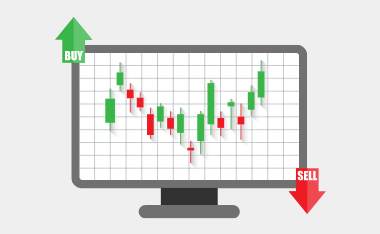Why You Don’t Need to Trade Every Night to Be Consistent

The notion that successful traders must be glued to their screens every night is a damaging myth in forex trading.
For Australian part-time traders juggling jobs, families, and other commitments, this belief creates unnecessary pressure. It leads to overtrading – the single fastest way to blow up an account.
The truth is radically different: the most consistently profitable traders often make the most money by doing the least.
They understand that trading is about quality, not quantity.
Waiting for only the strongest opportunities – instead of forcing trades out of boredom or fear of missing out – separates the professionals from the perpetual strugglers.
The Overtrading Trap: Why More Screen Time Often Means Less Profit
Many new traders fall into the trap of believing that more trading equals more success.
They sit through the Sydney session, push through London, and stay up for New York, convinced that if they just watch the markets enough, profits will come.
What actually happens is fatigue sets in, judgement becomes clouded, and traders start taking marginal setups they would normally avoid.
The data shows this clearly – a study of 10,000 retail trading accounts found that traders who placed more than 20 trades per week had significantly worse results than those who placed 5-10 quality trades.
The psychological drivers behind overtrading are powerful.
There’s the fear that if you’re not in the market, you’re missing the “big move.”
There’s the dopamine hit from placing trades, even bad ones.
And there’s the mistaken belief that being busy equals being productive.
But the reality is that the forex market isn’t going anywhere.
The same strong opportunities that appear today will appear tomorrow, and next week, and next month.
The key is being patient enough to wait for them, and disciplined enough to pass on everything else.
The Power of Strategic Patience: How Less Trading Leads to More Profit
Professional traders approach the market with a sniper’s mentality, not a machine gun spray.
They understand that most market action is noise, and only a small percentage of price movements represent truly high-probability opportunities.
Consider this: in any given week, there might be 2-3 truly “A-grade” setups on EUR/USD, another 2-3 on GBP/USD, and maybe 1-2 on AUD/JPY.
That’s potentially 5-8 quality trades per week across the major pairs – far fewer than most retail traders attempt.
The mathematics of patience are compelling. Imagine two traders:
Trader A takes 30 trades per week with a 40% win rate and average risk/reward of 1:1.5.
Trader B takes just 5 high-quality trades per week with a 60% win rate and average risk/reward of 1:2.
At the end of a month, Trader B will have better results with less screen time, less stress, and lower transaction costs.
This isn’t hypothetical – it’s exactly how the most successful traders operate.
They’ve learned that consistency comes from selectivity.
Identifying Your Personal High-Probability Windows
Every trader has times when they perform best, and currency pairs where they have an edge.
The key to trading less while earning more is identifying these sweet spots and focusing your energy there.
For most Australian part-time traders, this means concentrating on two key areas:
First, the London session overlap (4pm-7pm AEST) when European and American traders are both active.
This is when EUR/USD, GBP/USD and USD/JPY see their cleanest moves of the day.
The liquidity is deep, the spreads are tight, and the institutional order flow creates reliable trends.
Many successful traders only trade this 3-hour window and ignore the rest of the day completely.
Second, the key economic releases that actually move markets. In 2025, with central banks closely watching inflation data, events like US Non-Farm Payrolls, CPI releases, and RBA statements create predictable volatility.
Trading around key events, with proper preparation, can be more profitable than endless hours of sideways action.
This method aligns perfectly with a typical Australian work schedule.
Start by analyzing markets in the morning, set alerts for key levels, then check during the London open after work.
No need for all-night trading sessions.
The Major Currency Pair Advantage
Major currency pairs (EUR/USD, GBP/USD, USD/JPY, AUD/USD) are ideal for selective trading.
They have deep liquidity, respect technical levels, and are driven by clear fundamentals.
They also offer tight spreads, even during volatile times, keeping costs low.
EUR/USD is a prime example.
It sees decisive moves during the London session, when European banks are active.
A trader focusing on this pair can find 2-3 high-quality setups per week.
This is enough to generate consistent profits without constant trading.
GBP/USD around UK economic releases and AUD/USD during Asian session turns also offer opportunities.
The majors move logically and predictably, if you’re patient.
Trading them strategically leads to consistency, not constant activity.
Building Your Personal Trading Filter
Consistency comes from a strict filter, not more trades.
Your filter should answer three key questions:
- Is this my preferred trading environment?
- Does the current volatility match my strategy?
- Is the economic calendar clear of major risk events?
- Are the spreads and liquidity optimal?
- Is this one of my high-probability setups?
- Does it match my best-performing historical patterns?
- Is the risk/reward ratio at least 1:1.5 in my favor?
- Are multiple timeframes confirming the signal?
- Am I in the right mental state to execute properly?
- Am I well-rested and focused?
- Have I reviewed my trading plan recently?
- Am I trading because I see an opportunity, or just because I’m bored?
If any answer is “no,” the trade doesn’t happen. This discipline separates consistent performers from strugglers.
The RBA Factor: Trading Less in 2025’s Economic Climate
Australia’s economic situation makes selective trading even more vital.
The RBA is cautiously managing inflation and slowing growth, causing AUD pairs to be volatile.
Traders who react to every small move get hurt, while those waiting for clear trends around key events catch the big moves.
This pattern is seen globally.
The post-pandemic economy has markets trending strongly but spending much time consolidating.
This is ideal for patient traders but a nightmare for those who must trade constantly.
Practical Steps to Trade Less and Earn More
To adopt this strategy, you must make significant adjustments to your trading habits:
- Plan your trading sessions as you would any critical meeting – ideally, limit it to the London open from Monday to Thursday. Avoid checking the markets outside these hours.
- Establish clear trade criteria and document them. Adhere strictly to these rules, with no room for exceptions or “one-off” trades.
- Employ limit orders and alerts to monitor the markets without constant vigilance. Determine your entry and exit points in advance and step away from the screen.
- Maintain a performance journal that tracks not just your trades but also your adherence to your schedule and rules.
- Regularly review your performance to confirm that fewer trades have led to better results (a likely outcome).
The Freedom of Trading Less
Discovering you don’t need to trade every night can be incredibly liberating.
This shift eliminates the guilt of missing out, the stress of constant monitoring, and the fatigue from trying to be omnipresent.
Most importantly, it allows you to concentrate on the quality of your trades, not just the quantity.
The market will always be there for you tomorrow.
Opportunities will always arise again.
Your role isn’t to catch every market move. It’s to identify the right ones, under optimal conditions, with thorough preparation.
Consistently execute this approach, and you’ll join the elite group of traders who achieve long-term profitability.
Disclaimer
The information, strategies, techniques and approaches discussed in this article are for general information purposes only. The Trading Coach International does not necessarily use, promote nor recommend any strategies discussed in this article. The information in this article may not be suitable for your personal financial circumstances and you should seek independent qualified financial advice before implementing any financial strategy. The Trading Coach International is not a financial advisor and does not have AFS registration.


















